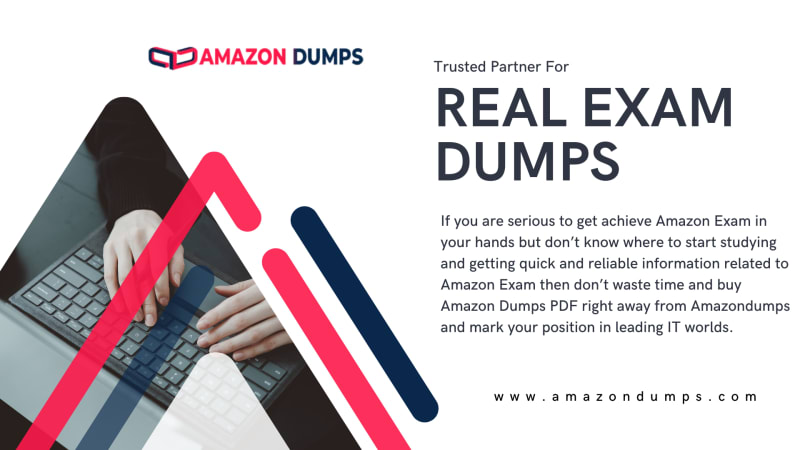
Introduction:
For comprehensive AWS Certified Solutions Architect - Associate SAA-C03 Practice Test for the all AWS exam, Amazondumps is your ultimate resource. As you prepare for the exam, it's crucial to understand the core AWS services and concepts. AWS (Amazon Web Services) has transformed cloud computing, offering a wide range of services to meet diverse business needs. In this article, we will explore these key services and concepts that form the foundation of the SAA-C03 exam. From compute and storage services to networking, security, scalability, and monitoring, let's dive into the essential aspects that will help you succeed in the exam and excel in your AWS journey.
Core AWS Services: Building the Foundation for Cloud Computing Success:
Compute Services: One of the fundamental AWS services is Elastic Compute Cloud (EC2). With EC2, you can launch virtual servers known as instances, tailored to specific needs. It provides unmatched elasticity and scalability, offering various instance types and flexible pricing models.
Another critical service is Lambda, enabling serverless computing. With Lambda, you can run code without managing servers, adopting an event-driven architecture for rapid development, automatic scaling, and cost optimization.
Storage Services: Ensuring Secure and Scalable Data Management:
Simple Storage Service (S3) is a highly scalable object storage service. It offers durability, availability, and seamless integration with other AWS services. S3 is widely used for storing and retrieving large volumes of data, hosting static websites, and enabling data backups and archiving.
For managing relational databases, AWS provides the Relational Database Service (RDS). RDS offers a managed database experience, supporting popular engines like MySQL, PostgreSQL, and Oracle. RDS simplifies administrative tasks, ensuring high availability, durability, and automatic backups.
Networking and Security: Creating Secure and Isolated Environments
To establish a private and secure network within AWS, Virtual Private Cloud (VPC) is essential. VPC allows you to define and control a virtual network environment, including IP addressing, subnets, routing tables, and network gateways. It provides isolation and security for resources deployed in the cloud.
Identity and Access Management (IAM) is crucial for managing access to AWS resources. IAM enables you to create and manage user identities, groups, and roles, with fine-grained permissions. It ensures secure access and implements the principle of least privilege across your AWS environment.
Security Groups act as virtual firewalls for EC2 instances, controlling inbound and outbound traffic based on protocols, ports, and IP ranges. Proper configuration of security groups ensures secure communication and protects resources from unauthorized access.
Route 53 is AWS's scalable domain name system (DNS) web service, efficiently routing internet traffic to AWS resources. It enables seamless connectivity for applications, including EC2 instances, load balancers, and S3 buckets.
Scalability and High Availability: Building Resilient and Efficient Solutions
Auto Scaling dynamically adjusts resource capacity based on demand, ensuring optimal performance, cost optimization, and application availability. It automatically adds or removes instances, allowing businesses to handle varying workloads effectively.
Elastic Load Balancer (ELB) distributes incoming traffic across multiple EC2 instances, enhancing fault tolerance and scalability. It balances the load and directs traffic to healthy instances, ensuring high availability and a seamless user experience.
Infrastructure as Code and Monitoring: Automating Deployment and Monitoring of AWS Resources
CloudFormation is an infrastructure as code service, enabling the provisioning and management of AWS resources using templates. With CloudFormation, you can define your infrastructure declaratively, automate deployments, and ensure consistent environments.
CloudWatch is a comprehensive monitoring service provided by AWS. It collects and tracks metrics, logs, and events from various AWS resources and applications. CloudWatch enables real-time monitoring, analysis, and troubleshooting, helping you maintain optimal performance and identify potential issues proactively. By configuring CloudWatch alarms, you can set thresholds and receive notifications when certain metrics cross predefined limits.
In your SAA-C03 exam preparation, it is crucial to not only understand the key AWS services but also practice with mock tests. Amazondumps offers a comprehensive collection of study resources, including PDFs and other Format, designed specifically for the SAA-C03 exam. These resources will enhance your understanding, test your knowledge, and provide valuable insights to excel in the exam.
Conclusion:
To succeed in the SAA-C03 exam and build robust AWS solutions, it is essential to master the key AWS services and concepts discussed in this article. By understanding compute services like EC2 and Lambda, storage services such as S3 and RDS, networking and security with VPC, IAM, and security groups, and by leveraging scalability with Auto Scaling and ELB, and infrastructure as code using CloudFormation, you will be well-prepared to design and deploy resilient architectures in the AWS cloud.
Visit Amazondumps for comprehensive SAA-C03 Dumps. These resources will enhance your exam preparation, test your knowledge, and provide valuable insights for success in the exam. Good luck with your SAA-C03 exam and your journey as an AWS Solutions Architect!


Top comments (0)